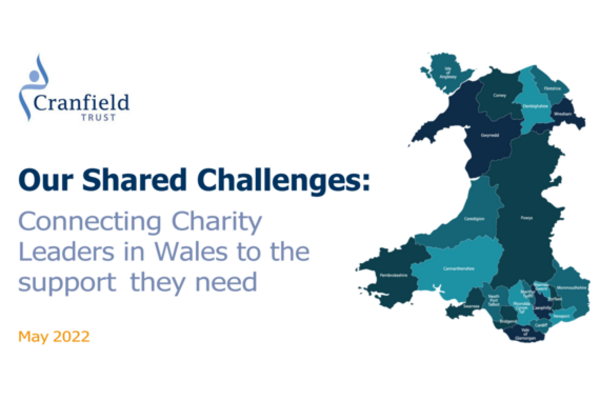At this time of financial uncertainty, charities that are facing more competition for funding, and reduced access to funding opportunities, are diversifying income streams and considering a variety of financing options to help ensure their organisation’s sustainability.
Suzanne Waggett, Chief Investment Officer at Fredericks Foundation shares an insight into social investing and why charities might consider social investment. Fredericks Foundation offers expert advice and flexible finance to social enterprises and charities, helping them to realise their full potential and scale.
Why would a charity or social enterprise consider social investment as part of their funding strategy?
In the current climate charities are finding it increasingly difficult to rely solely on grant funding. Instead, many are seeking to diversify their income streams. Social investment can help in three important ways.
1. Build resilience by diversifying your sources of unrestricted income. Social investment can help you fund the resources you require to grow your earned income - such as capital investment, growing your team or operating expenditure. Your increased earned income can fund the repayments.
For example, The Clink charity delivers training and support into employment for people in and leaving prison, and young people who risk entering prison. Their mission is to reduce reoffending. They have a mix of income streams including a growing event catering business. The Clink wanted to expand that business, but they needed to set up a new kitchen. Fredericks and other social investors provided investment to help fund the new kitchen alongside grants.
2. Buys you time by filling a funding gap. It takes time to build income from new funding sources, whether that’s new grant funders, donors, corporate partners, or earned income. At Fredericks Foundation we pride ourselves on being able to move quickly, offering organisations the funding they need, when they need it.
We’re working with Carefree who offer vital breaks to unpaid carers. Carefree needed funding to help cover operating costs and new staff hires as it continues to grow its earned income streams and build a pipeline of other funding sources.
3. Builds reserves to help cushion the effects of ‘lumpy’ income and fluctuations in working capital needs, for example if you are contending with long invoicing timescales that mean you’ve had to pay for work carried out before the cash comes in to cover it.
What does social investment look like in practice?
Social investment can take many forms. It can be anything from loans all the way through to equity and amounts available range from £20k to £1m or more. Most available funding is repayable loans, but some organisations (including us) offer revenue participation agreements (RPAs) – which can be described as a form of ‘quasi equity’. Options available also include blended funding (a mix of grant and loan) that improves affordability. If you want to find out more, the Good Finance website has lots of useful information to help you understand social investment.
What is an RPA and how does it differ from a loan?
Repayments on a traditional loan are fixed, based on a predetermined repayment schedule over the repayment term of the loan. RPA repayments on the other hand are linked to revenue (specifically earned income). It is more flexible and patient than a traditional loan. If revenue falls or doesn’t grow as quickly as projected, then repayments reduce and are spread out over a longer time. There is usually a maximum repayment amount agreed, so once this is reached, payments stop. Plus, as revenue (hopefully) grows over time, more of the repayments are pushed to later years, reducing the stress on cashflow today. In fact, at Fredericks, we can even offer a repayment holiday for as much as the first year, where needed.
How does blended finance work?
It’s generally a loan, with a grant provided alongside. The grant element subsidises your costs thereby increasing the surplus available to meet the interest and repayments on the loan element – making it more affordable. Fredericks can provide blended finance comprised of 25% grant, 75% loan through our partnership with SIB (Social Investment Business) in the Thrive Together Fund (TTF). SIB also offers blended funding through its Cost of Living and Flexible Finance funds and there are several other social investors offering blended finance packages – you can search for blended finance on the Good Finance website.
What do social investors look for?
All social investors are different, so I can’t speak for everyone, but impact and financial sustainability are the most important qualities to demonstrate when applying for investment.
1. Impact – investors want to see that you have clearly identified a need, that you understand and have defined who your beneficiaries are and how you are helping them. They want to see that you’re tracking and measuring your impact and that the impact can be scaled with their investment.
2. Financial sustainability – this is about the affordability of the repayments. The last thing we want is for charities to get into financial difficulty because of our investment, so we’re looking to see that your forecast surplus can cover repayments. It’s important that you have good financial management in place, including sound budgeting and financial reporting, particularly cashflow forecasting and management accounts. We know this isn’t always easy to put together, but if you have a committed leadership team and good, proactive governance, then we can help with the rest.
The Reach Fund offer grants for the additional resource needed to develop financial and business planning to help you become investment ready. We can help you access this if it’s needed, but even without that, our clients often tell us the investment assessment process helped them to get more robust financial planning and reporting in place, in turn helping their organisational planning. You can also access lots of free resources online to support and guide your cashflow forecasting, financial management and business planning through Cranfield Trust or social welfare charities can also contact the Trust for volunteer support in these areas.
Is repayable funding right for everyone?
Repayable funding can offer a valuable addition to many charities, but no, it isn’t right for everyone. The key question is affordability of repayments. It’s most appropriate for organisations with earned/trading income streams so you don’t have to fundraise to make payments. This is why investors will often set eligibility criteria to help determine whether it’s right for your organisation, such as length of time trading or income thresholds.
Find out more about Fredericks Foundation or you think social investment could be right for your organisation, please get in contact directly by email: [email protected]








